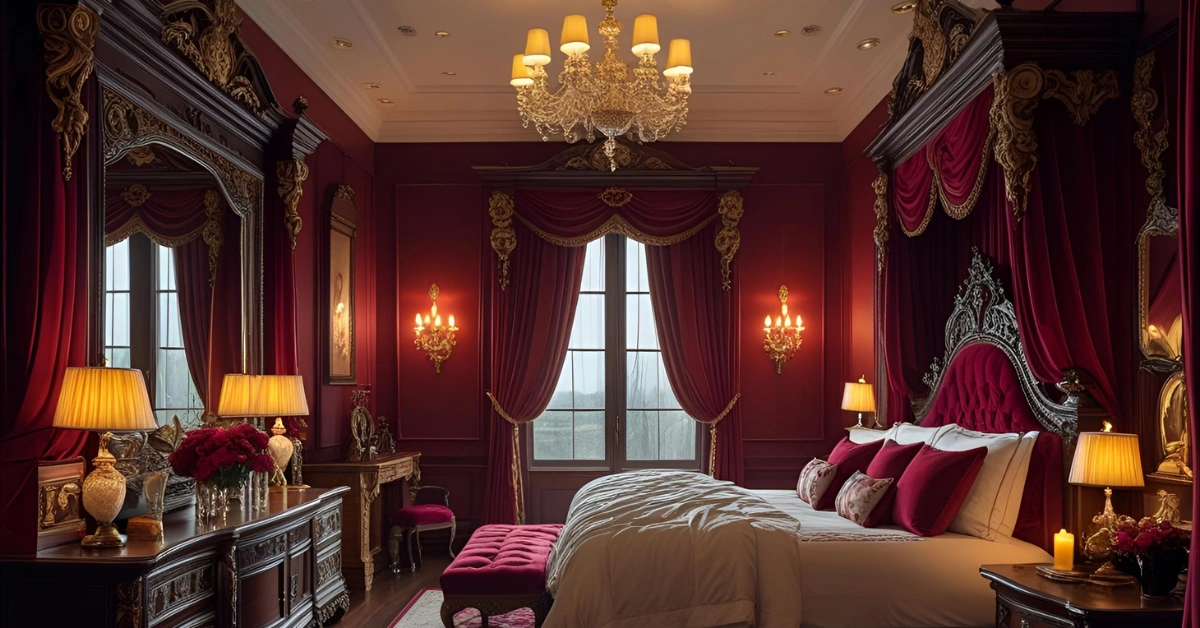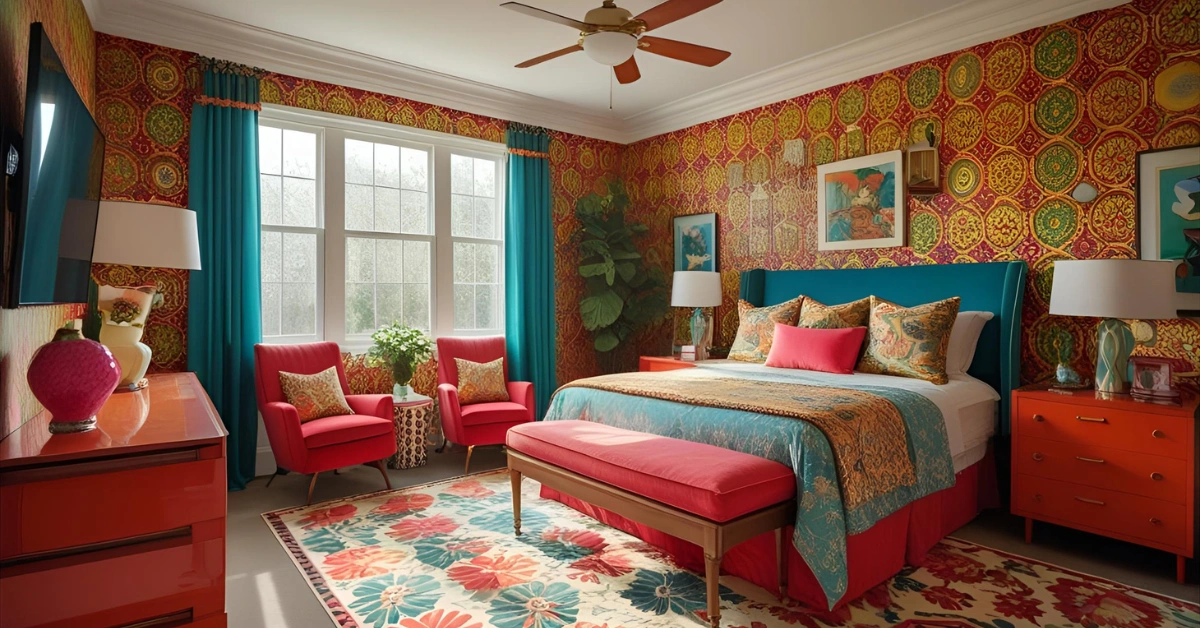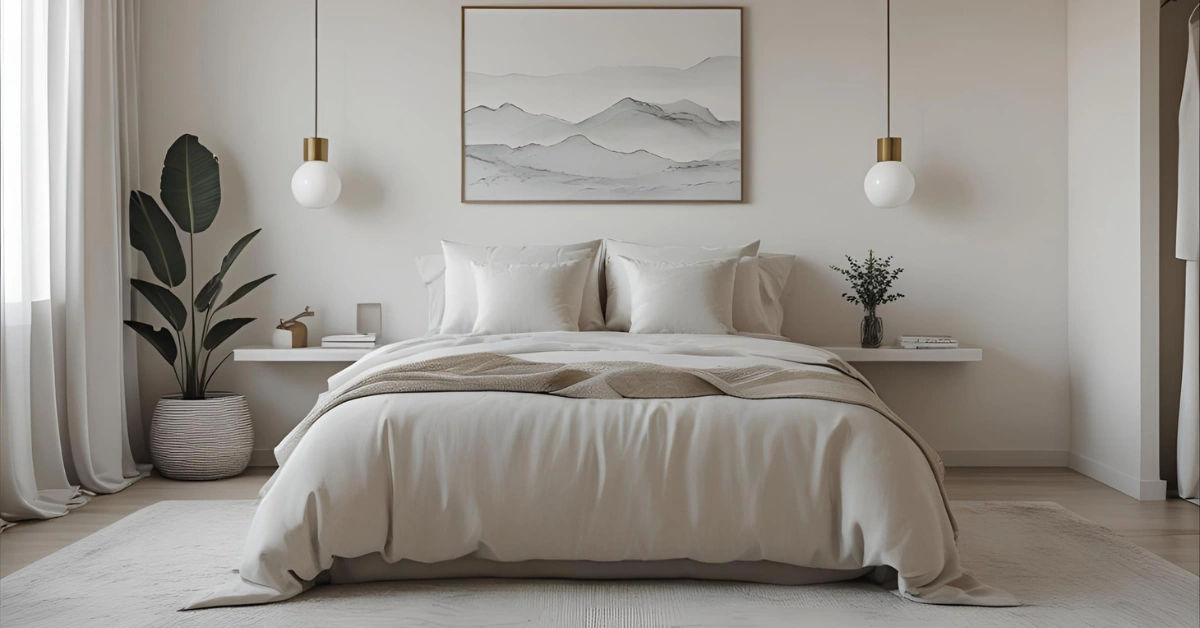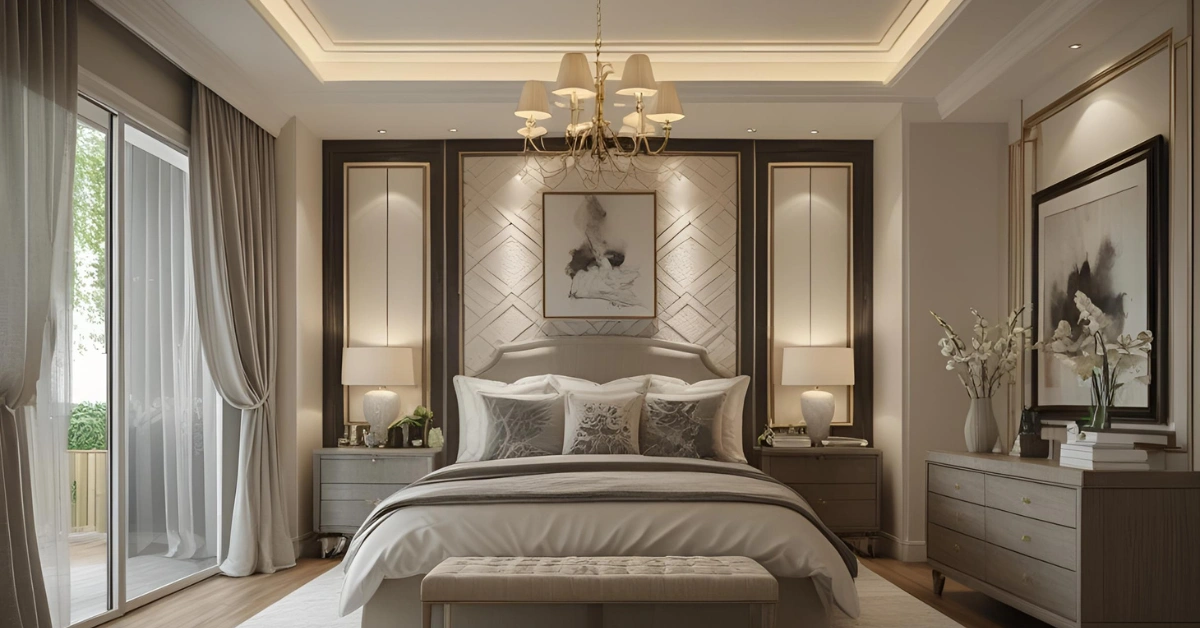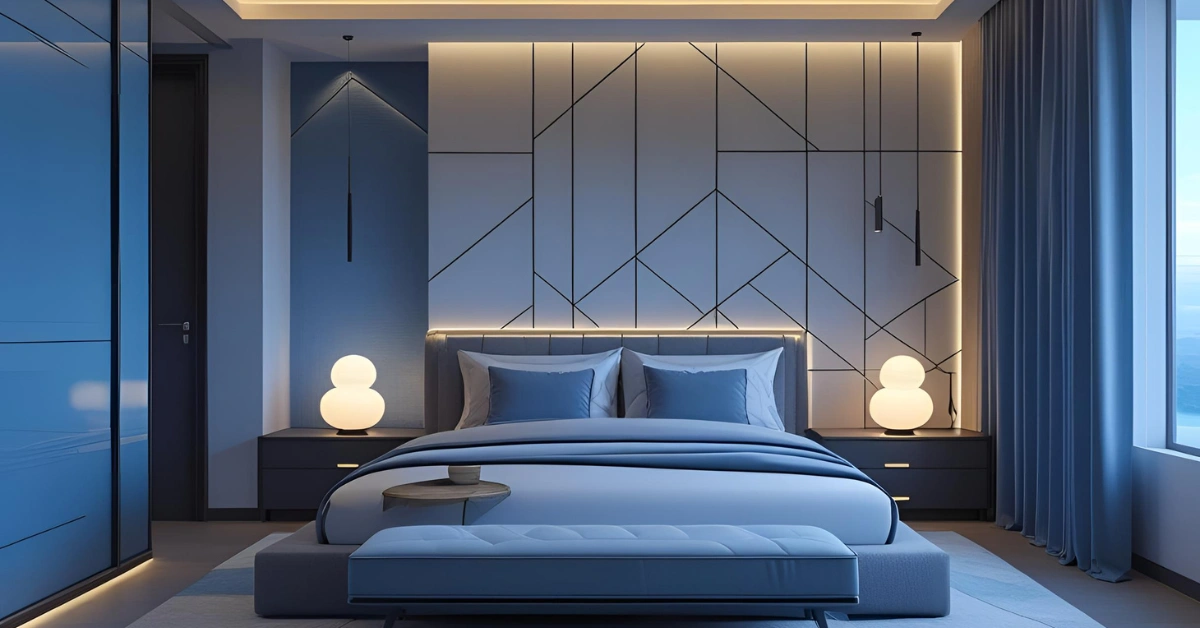Moroccan Bedroom Design: Create a Vibrant, Cozy Retreat

Struggling to create a bedroom that feels both luxurious and inviting? Many homeowners face the challenge of designing a space that balances bold aesthetics with comfort, often ending up with rooms that feel generic or uninspired.
Enter Moroccan bedroom design a style that blends rich colors, intricate patterns, and tactile textures to craft a sanctuary that feels exotic yet cozy. This guide dives deep into Moroccan-inspired design, offering practical tips, creative ideas, and expert insights to help you transform your bedroom into a vibrant retreat that stands the test of time.
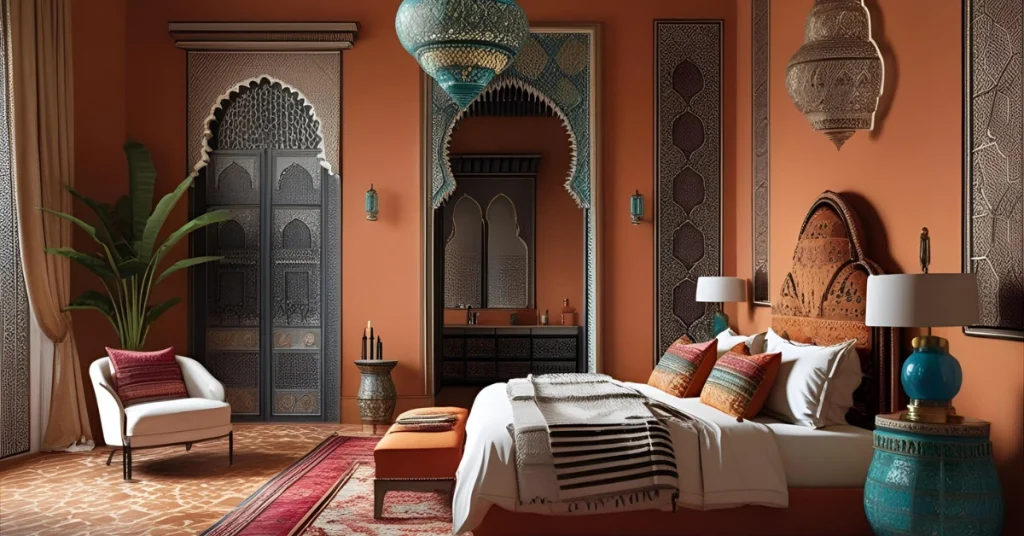
What Is Moroccan Bedroom Design?
Moroccan bedroom design draws inspiration from Morocco’s rich cultural heritage, blending North African, Mediterranean, and Islamic influences. It’s characterized by bold colors, intricate tilework, ornate textiles, and a sense of warmth that invites relaxation. According to design historian Amina Kabbaj, “Moroccan interiors reflect a storytelling tradition, where every pattern and hue carries centuries of craftsmanship” (source: Journal of Interior Design Studies, 2023).
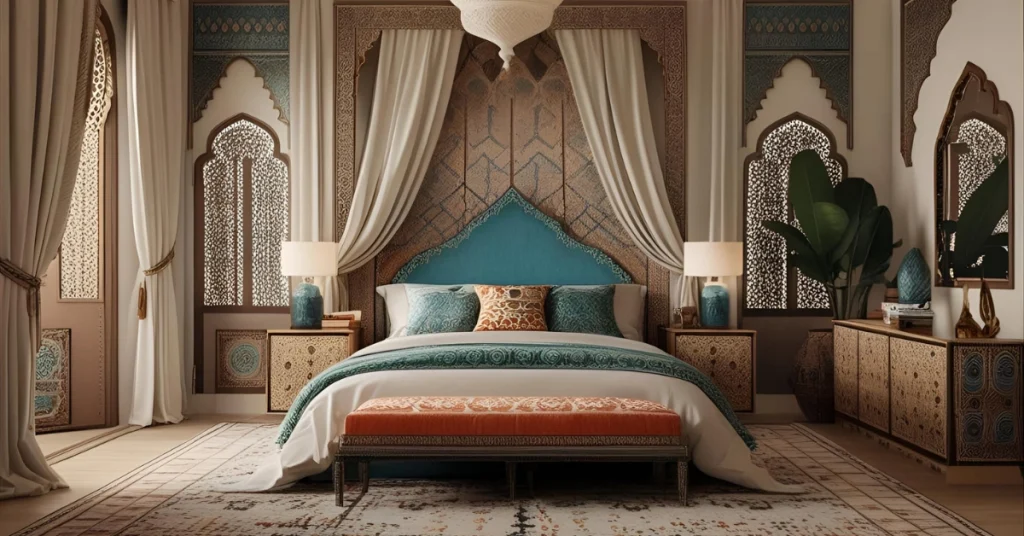
This style suits homeowners seeking a unique, globally inspired aesthetic. Whether you lean toward a maximalist approach or a subtle nod to Moroccan elements, the versatility of this design makes it achievable for any space.
Key Elements of Moroccan Bedroom Design
To create an authentic Moroccan bedroom, focus on these core components. Each adds a layer of depth, ensuring your space feels cohesive and immersive.
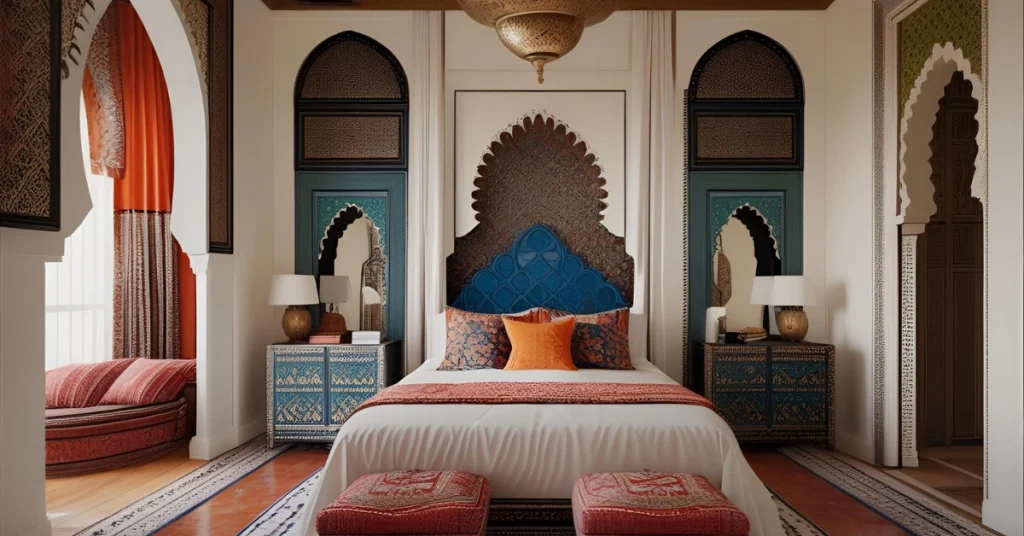
1. Rich, Warm Color Palettes
Moroccan design thrives on bold, earthy tones like terracotta, saffron, cobalt blue, and deep red. These hues evoke the landscapes and souks of Morocco.
- Practical Tip: Use a neutral base (white or beige walls) and layer with vibrant accents through bedding, rugs, or curtains.
- Example: A terracotta accent wall paired with cream bedding and turquoise throw pillows creates a balanced yet striking look.
- Designer Insight: “Don’t shy away from color,” says interior designer Fatima El-Mansouri. “In Moroccan design, bold hues are grounded by natural textures, creating harmony” (Elle Decor, 2024).
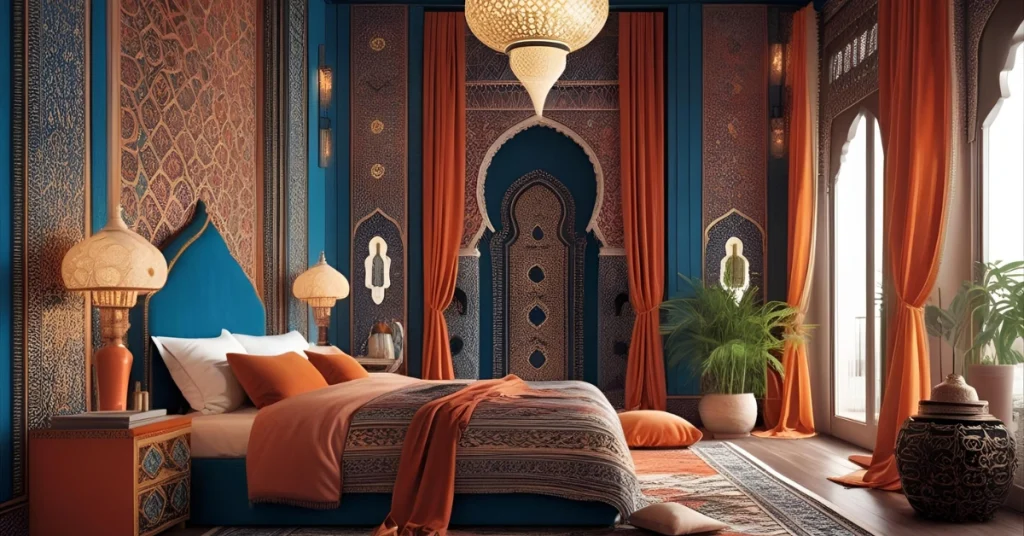
2. Intricate Patterns and Textiles
Patterns are the heartbeat of Moroccan style. Think geometric tiles, arabesque motifs, and woven fabrics.
- Zellige Tiles: Handcrafted clay tiles with mosaic patterns, often used for headboards or accent walls.
- Textiles: Layer kilim rugs, embroidered throws, and patterned cushions for a tactile experience.
- Practical Tip: Mix patterns thoughtfully—pair a bold rug with subtler bedding to avoid overwhelming the space.
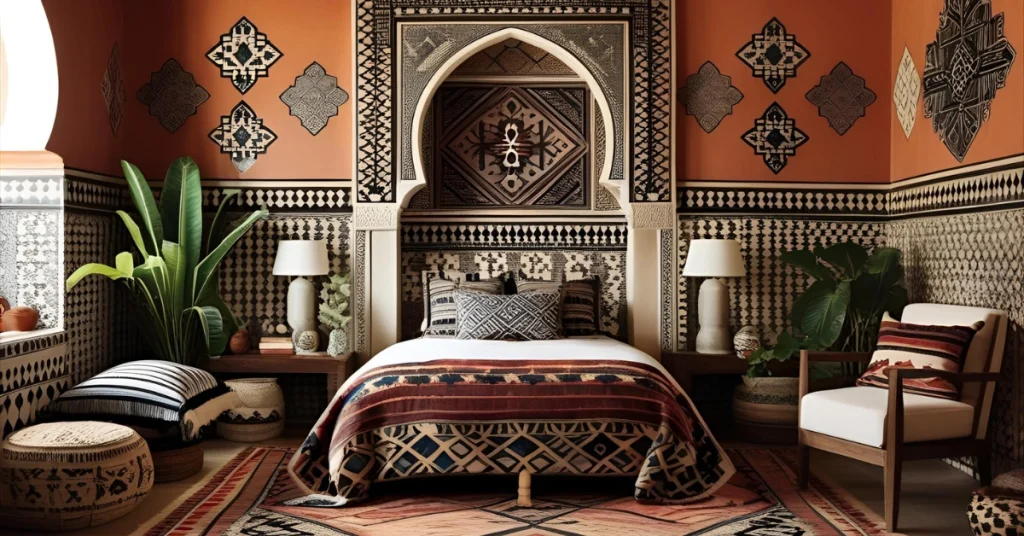
3. Ornate Furniture and Details
Moroccan furniture often features carved wood, inlaid metals, or arched designs. Low beds, poufs, and ottomans add a relaxed vibe.
- Example: A carved wooden headboard with brass accents can serve as a stunning focal point.
- Practical Tip: Opt for multifunctional pieces, like a pouf that doubles as seating or storage, to maximize space.
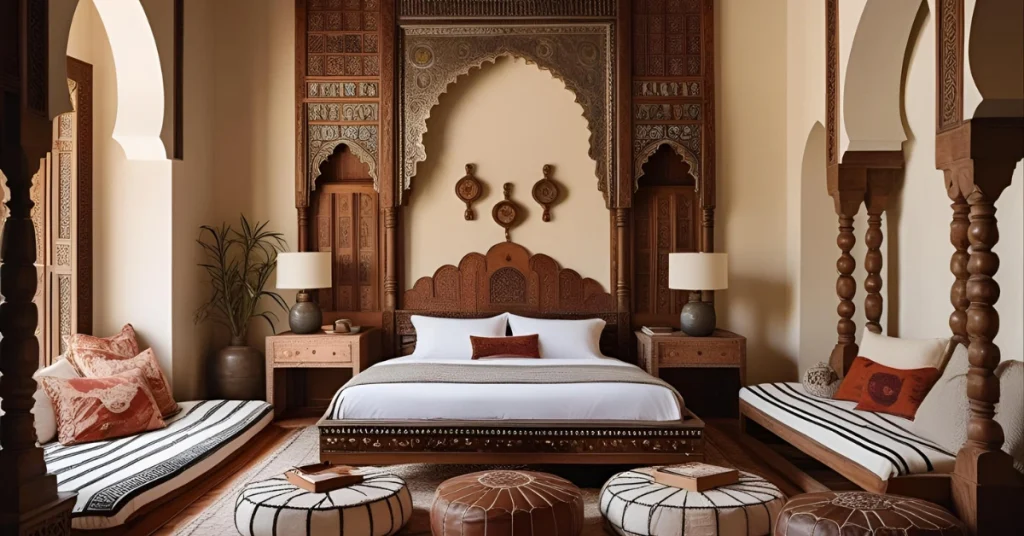
4. Ambient Lighting
Lighting in Moroccan bedrooms creates a warm, inviting glow. Lanterns with filigree patterns or stained glass cast intricate shadows.
- Practical Tip: Hang a Moroccan pendant light or place tabletop lanterns for a magical effect.
- Designer Insight: “Lighting is key to setting the mood,” says designer Youssef Amrani. “Choose warm bulbs to enhance the cozy, intimate feel” (Architectural Digest, 2024).
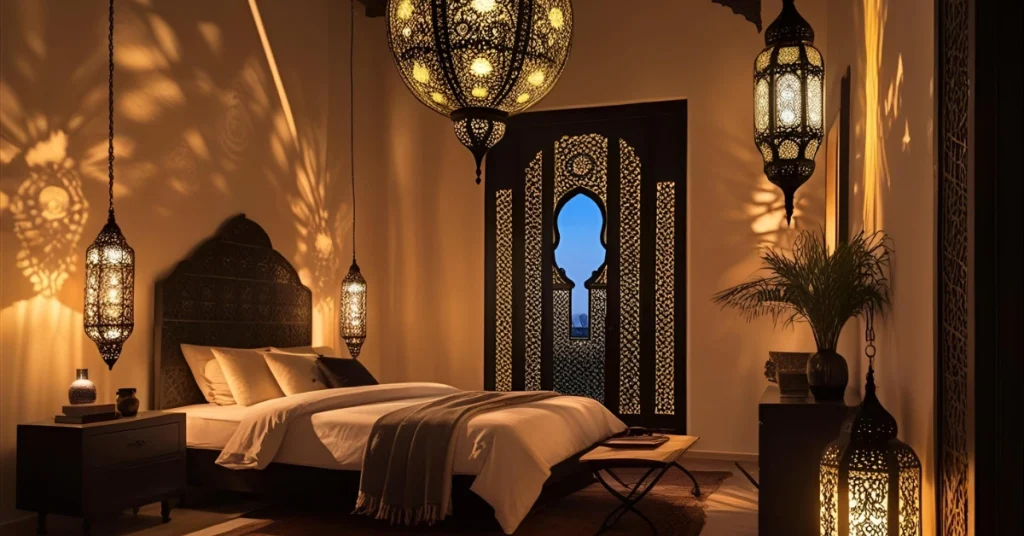
5. Natural Materials
Wood, leather, and clay anchor Moroccan design, adding authenticity and warmth.
- Example: A woven jute rug or a leather pouf complements the earthy aesthetic.
- Practical Tip: Incorporate plants like palms or succulents to bring nature indoors, enhancing the organic feel.
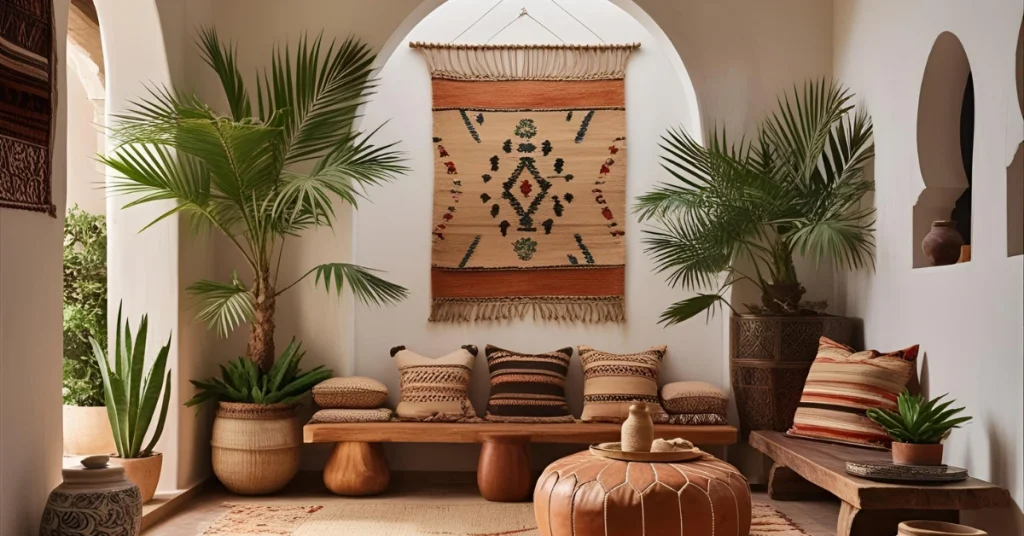
How to Incorporate Moroccan Bedroom Design in Your Home
Ready to bring Moroccan style to your bedroom? Here’s a step-by-step guide to make it happen, tailored to different budgets and spaces.
Step 1: Start with a Color Scheme
Choose 2–3 core colors to define your palette. For a bold look, combine jewel tones like emerald green and sapphire blue. For a softer vibe, use neutrals with pops of mustard or coral.
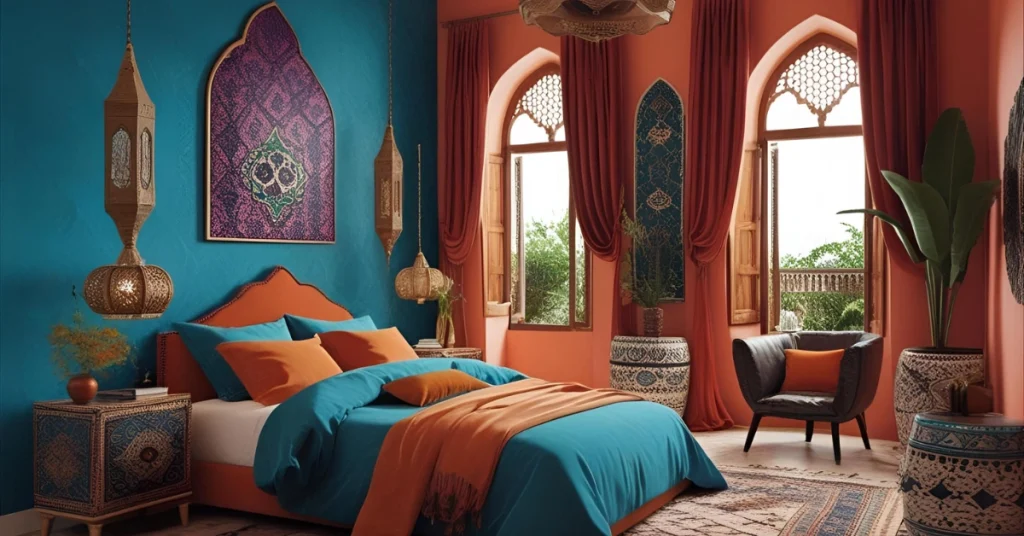
- Budget Tip: If painting an accent wall feels daunting, use removable wallpaper with Moroccan patterns for a renter-friendly option.
- Example: In my friend’s small apartment, she painted one wall terracotta and added gold-framed mirrors, instantly elevating the space.
Step 2: Layer Textures and Patterns
Textiles are the soul of Moroccan bedroom design. Layer rugs, throws, and cushions to create depth.
- Mixing Patterns: Combine geometric kilim rugs with floral cushions, keeping the color palette consistent.
- Practical Tip: Source affordable textiles from markets like Etsy or local thrift stores for authentic finds.
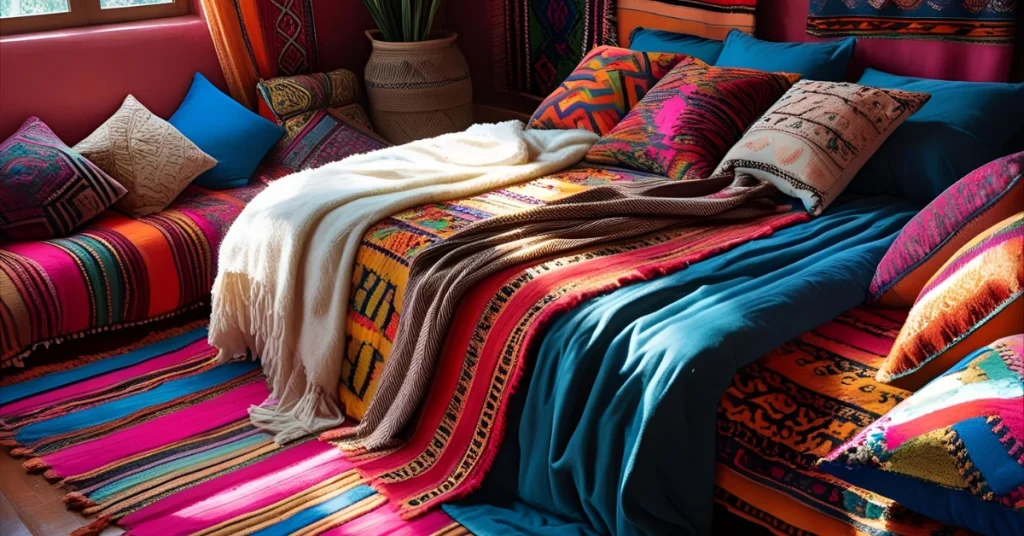
Step 3: Choose Statement Furniture
A carved wooden bedframe or a low platform bed sets the tone. Add side tables with inlaid designs or a brass-trimmed dresser for flair.
- Budget Tip: Refinish an existing bedframe with a dark stain and add brass hardware for a Moroccan-inspired upgrade.
- Example: A client I worked with transformed a plain IKEA bed by adding a carved wooden panel from a local artisan, creating a custom look for less.
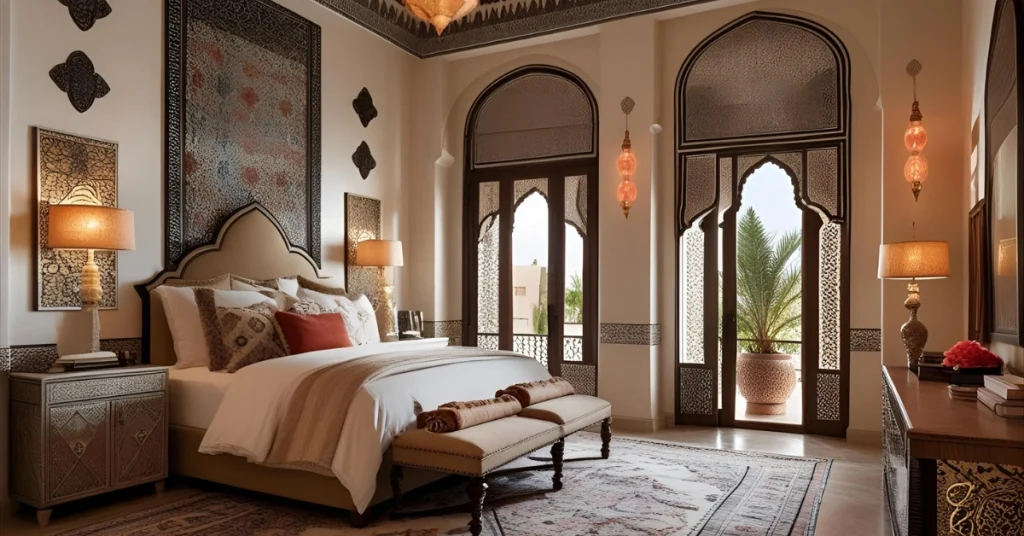
Step 4: Add Signature Lighting
Moroccan lanterns are non-negotiable for authenticity. Opt for hanging pendants, floor lamps, or candle holders with intricate cutouts.
- Practical Tip: Battery-operated LED candles inside lanterns are a safe, budget-friendly alternative to real candles.
- Designer Insight: “Lighting should feel like a hug,” says designer Laila Bensaid. “It’s about warmth and intimacy” (Vogue Living, 2024).
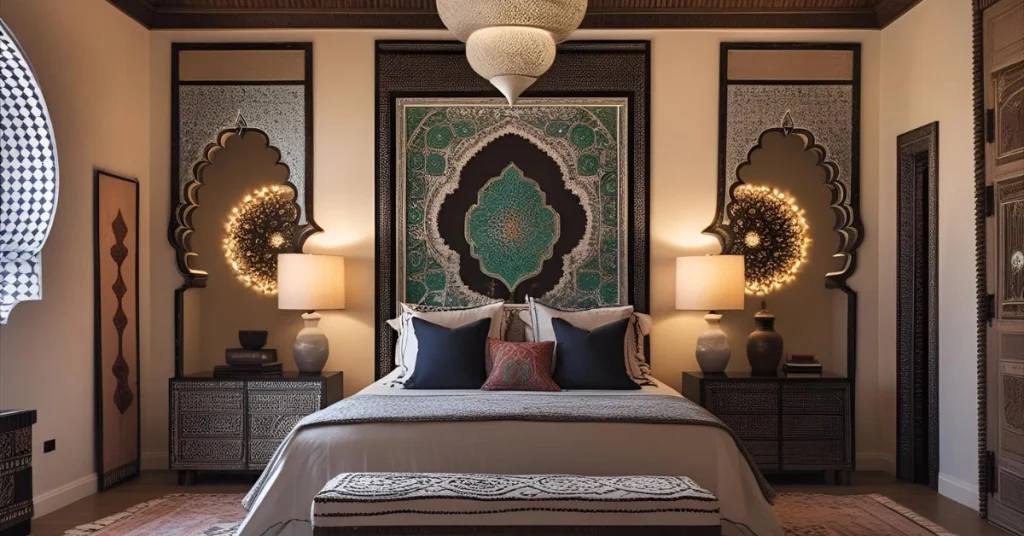
Step 5: Accessorize Thoughtfully
Incorporate mirrors with arched frames, ceramic vases, or woven baskets to complete the look.
- Practical Tip: Group accessories in odd numbers (e.g., three vases) for visual balance.
- Example: A small bedroom I saw on Instagram used a single oversized mirror with a filigree frame to make the space feel larger and more luxurious.
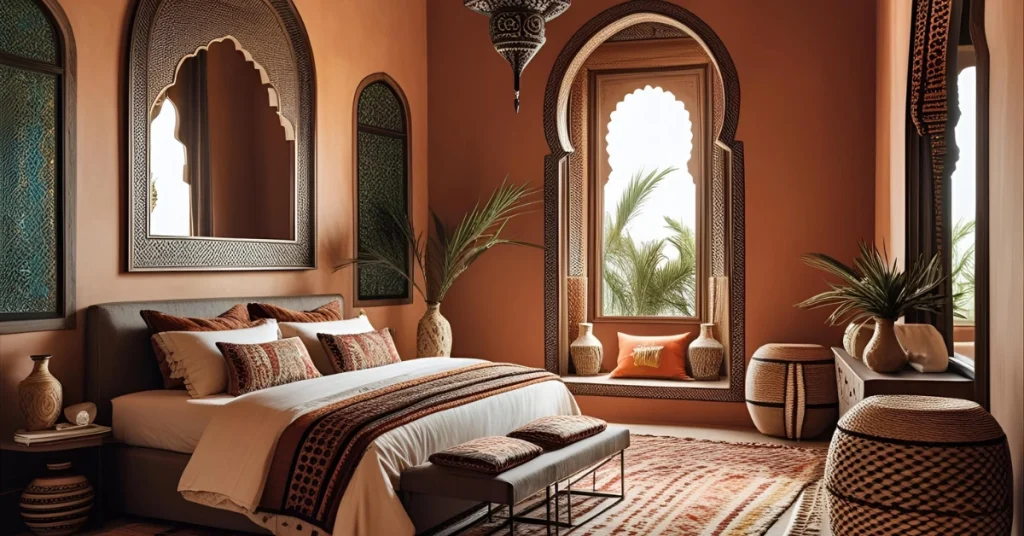
Moroccan Bedroom Design Ideas for Different Aesthetics
Moroccan style is versatile, blending with various design preferences. Here are four approaches to inspire your project.
1. Boho-Chic Moroccan Bedroom
Perfect for free-spirited homeowners, this style mixes Moroccan elements with eclectic touches.
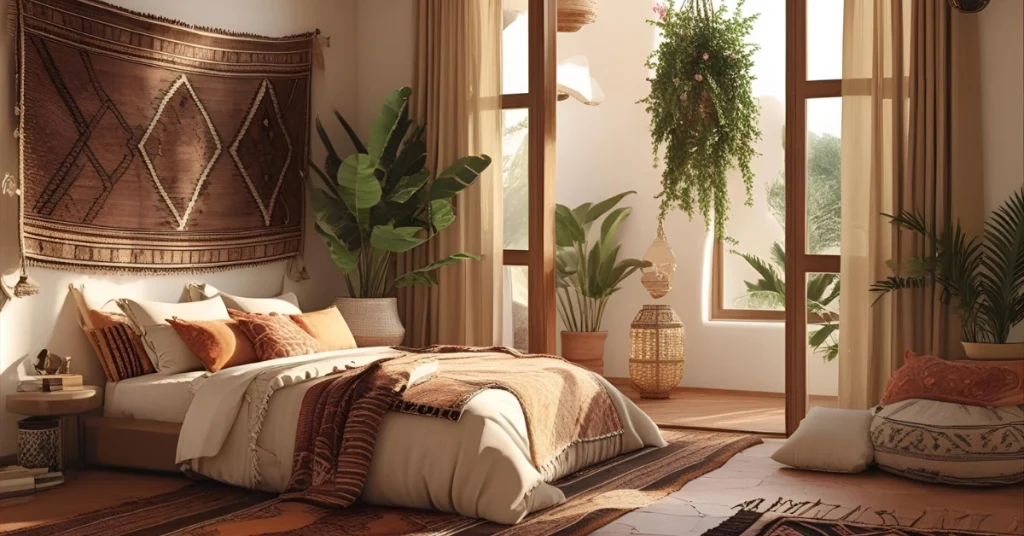
- Key Features: Macramé wall hangings, layered rugs, and vibrant throw pillows.
- Color Palette: Neutrals with pops of coral, turquoise, and gold.
- Practical Tip: Use a canopy bed with sheer curtains for a dreamy, bohemian vibe.
2. Modern Moroccan Bedroom
For a sleek, contemporary take, pair Moroccan elements with minimalist design.
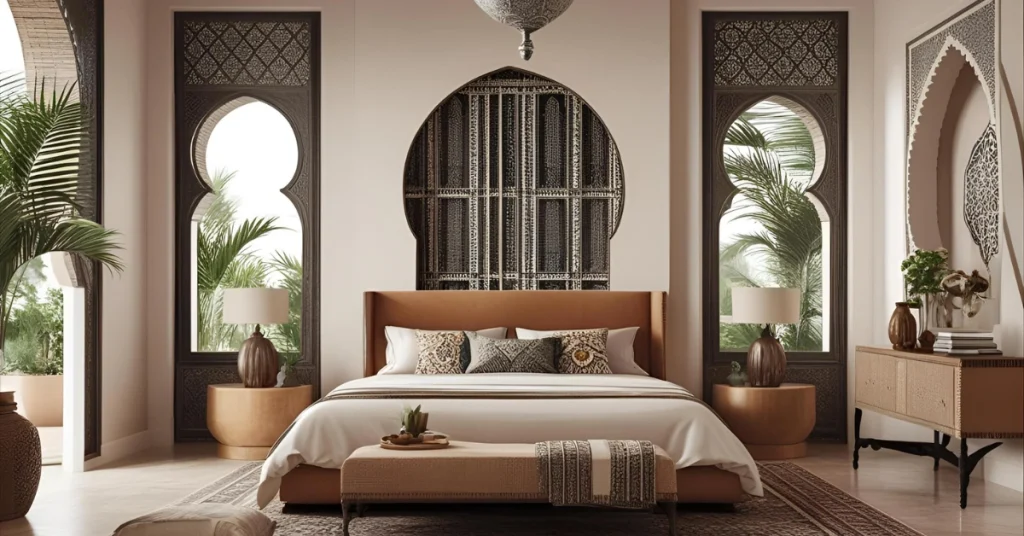
- Key Features: Clean lines, neutral walls, and subtle Moroccan accents like a single zellige tile headboard.
- Color Palette: Monochrome tones with one bold accent color, like cobalt blue.
- Example: A modern Moroccan bedroom I visited used a single terracotta rug against white walls, creating a chic, understated look.
3. Luxe Moroccan Bedroom
This approach leans into opulence, perfect for larger spaces or master suites.
- Key Features: Plush velvet bedding, brass accents, and oversized lanterns.
- Color Palette: Deep jewel tones like emerald, ruby, and sapphire.
- Practical Tip: Invest in a statement chandelier to elevate the luxurious feel.
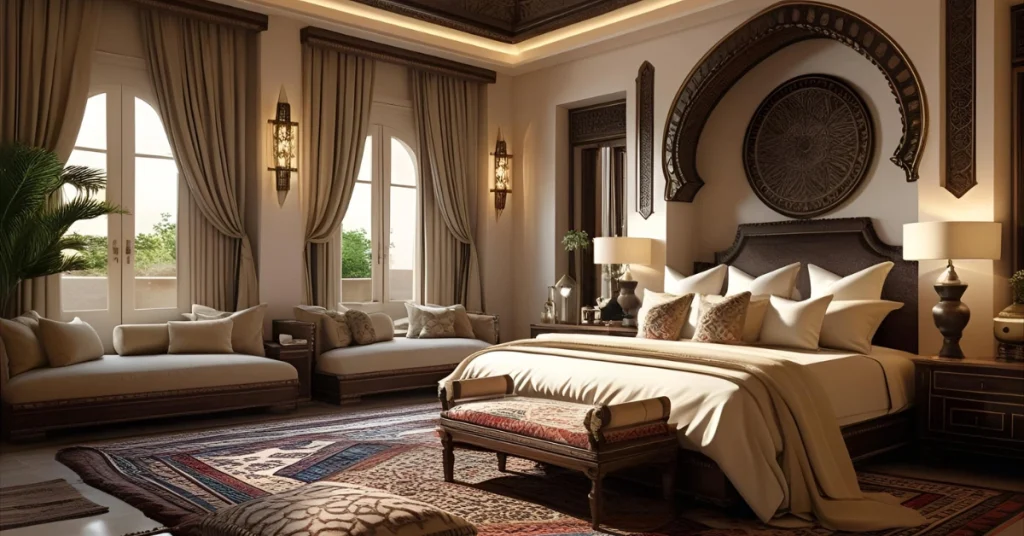
4. Minimalist Moroccan Bedroom
For small spaces or those who prefer simplicity, this style uses Moroccan elements sparingly.
- Key Features: Neutral textiles, one bold accent piece (e.g., a patterned rug), and simple furniture.
- Color Palette: Whites, beiges, and one accent color like mustard yellow.
- Practical Tip: Use a single Moroccan-inspired throw blanket to add character without clutter.
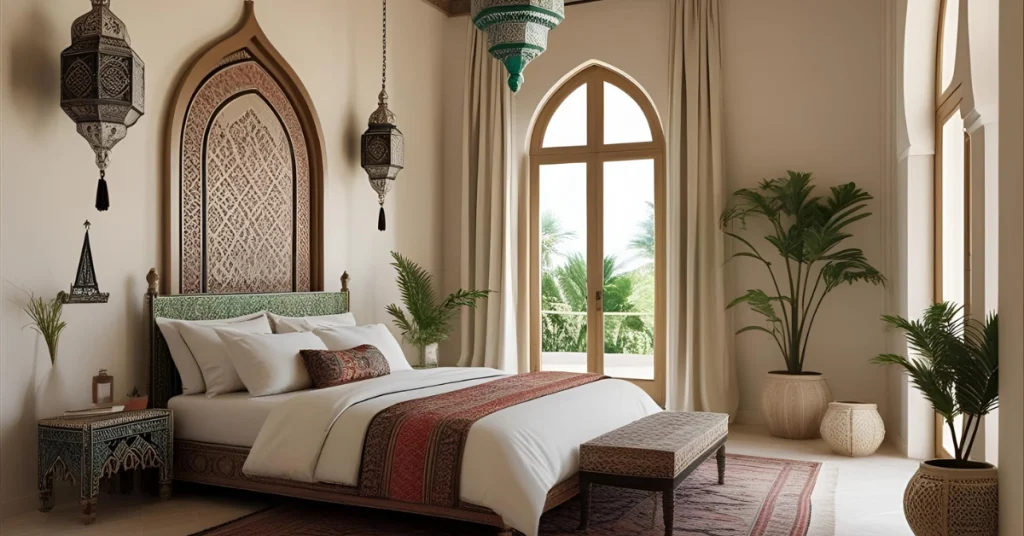
Common Mistakes to Avoid in Moroccan Bedroom Design
While Moroccan design is forgiving, certain pitfalls can disrupt the aesthetic. Here’s what to watch out for:
- Overloading Patterns: Too many bold patterns can feel chaotic. Stick to 2–3 patterns and balance with solids.
- Ignoring Scale: Oversized furniture in a small room can overwhelm the space. Choose pieces that fit your room’s proportions.
- Poor Lighting Choices: Cold, harsh lighting kills the cozy vibe. Opt for warm, ambient light sources.
- Neglecting Texture: Flat surfaces make the space feel sterile. Layer rugs, throws, and cushions for depth.
Designer Tip: “Balance is everything,” says interior designer Karim Laaroussi. “Moroccan design is bold, but it needs restraint to feel cohesive” (House Beautiful, 2024).
Budget-Friendly Moroccan Bedroom Design Ideas
You don’t need a big budget to achieve a Moroccan-inspired bedroom. Here are cost-effective tips:
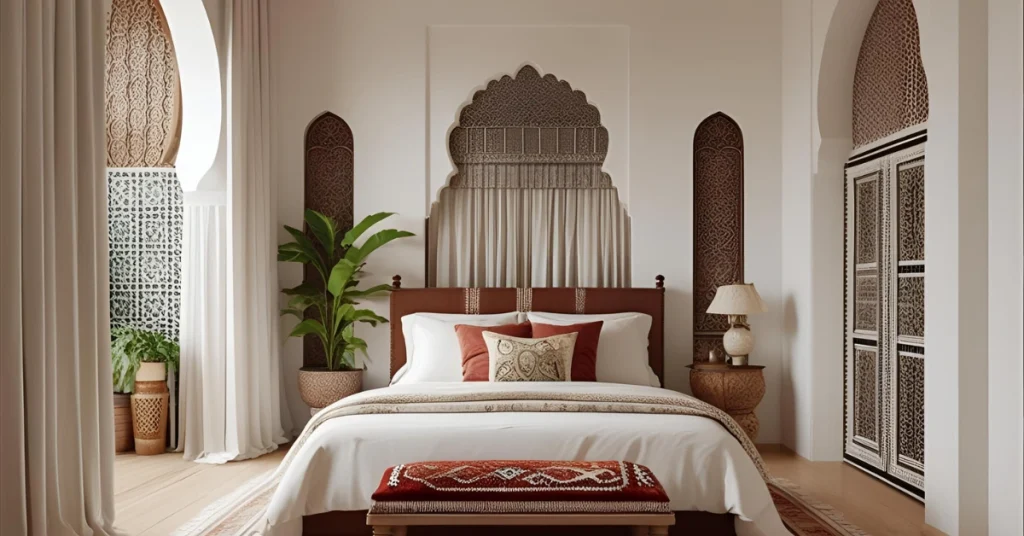
- DIY Headboard: Create a zellige-inspired headboard using peel-and-stick tiles from home improvement stores.
- Thrifted Finds: Hunt for kilim rugs or brass trays at thrift stores or flea markets.
- Repurpose Items: Paint an old dresser in a bold color like turquoise and add brass knobs for a custom look.
- Shop Online: Retailers like Amazon or World Market offer affordable Moroccan-style textiles and décor.
Example: A friend on a tight budget sourced a $20 kilim rug from a local market and paired it with IKEA bedding, creating a stunning Moroccan vibe for under $100.
Moroccan Bedroom Design for Small Spaces
Small bedrooms can still embrace Moroccan style with a few tweaks:
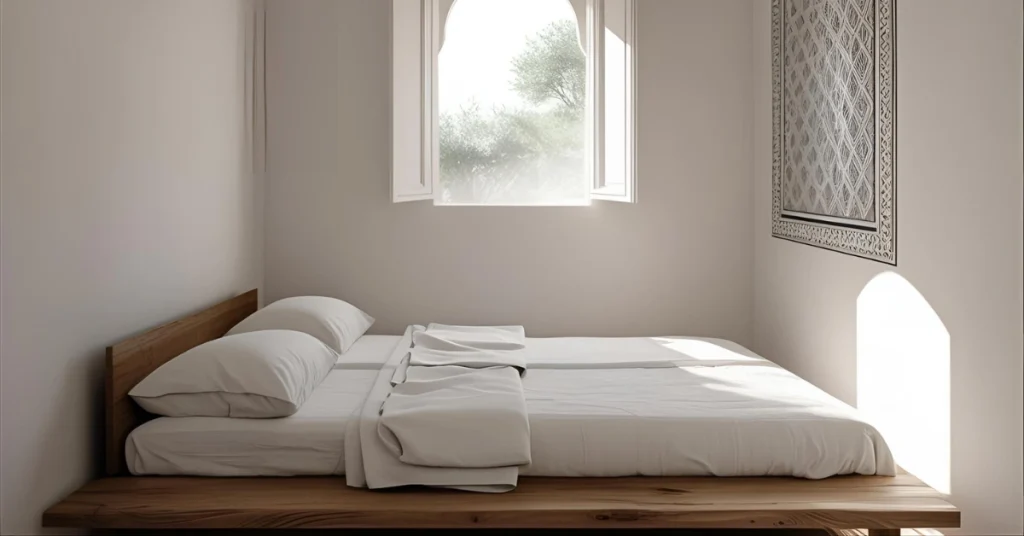
- Maximize Vertical Space: Use wall-mounted lanterns or floating shelves to save floor space.
- Choose Multifunctional Furniture: A storage ottoman or a low bed with built-in drawers keeps the space uncluttered.
- Use Mirrors: Arched mirrors with filigree frames make the room feel larger.
- Stick to a Simple Palette: Limit bold colors to one or two accents to avoid overwhelming the space.
Example: In a 10×10-foot bedroom I helped design, we used a single terracotta throw blanket and a small lantern, keeping the rest neutral for a spacious feel.
Cultural Significance of Moroccan Design Elements
Moroccan design isn’t just about aesthetics it’s deeply rooted in history. Zellige tiles, for instance, date back to the 10th century, used in mosques and palaces for their reflective quality (source: Moroccan Art & Architecture, 2022). Patterns often carry symbolic meanings, like protection or prosperity, drawn from Islamic art traditions.
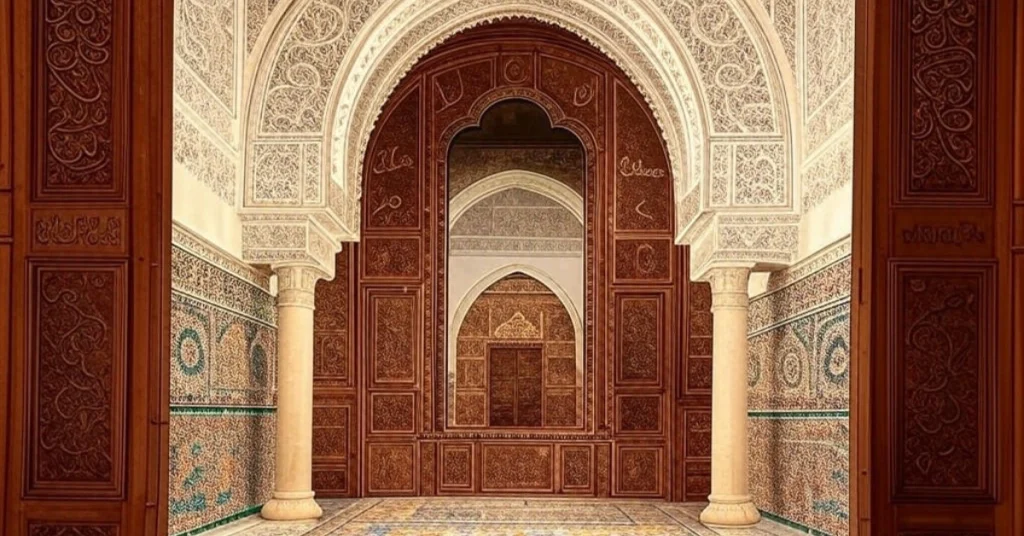
When incorporating these elements, respect their origins by sourcing authentic or artisan-made pieces where possible. This not only enhances authenticity but also supports traditional craftsmanship.
Maintenance and Care for Your Moroccan Bedroom
To keep your Moroccan bedroom looking vibrant:
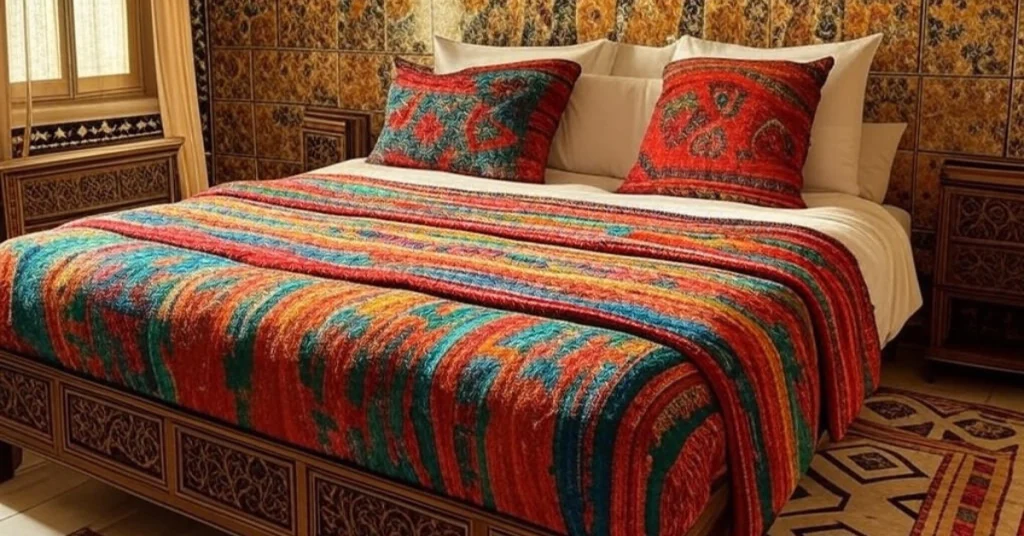
- Textiles: Vacuum rugs regularly and spot-clean throws to maintain their colors.
- Wood Furniture: Dust carved pieces weekly and polish with natural oils to preserve the finish.
- Lanterns: Clean filigree lanterns with a soft cloth to prevent dust buildup.
- Zellige Tiles: Seal tiles annually to protect against moisture and stains.
Practical Tip: Rotate cushions and throws seasonally to prevent wear and keep the space fresh.
Conclusion: Bring Moroccan Bedroom Design to Life
Moroccan bedroom design offers a unique blend of bold colors, intricate patterns, and cozy textures, transforming your space into a personal oasis. By layering textiles, choosing statement furniture, and adding ambient lighting, you can create a bedroom that feels both exotic and inviting. Whether you’re on a budget or designing a luxe retreat, the tips and ideas in this guide will help you craft a space that reflects your style and stands the test of time.
Call to Action: Ready to start your Moroccan bedroom transformation? Begin by picking one element—perhaps a vibrant rug or a statement lantern—and build from there. Share your design journey in the comments or explore our curated list of Moroccan décor retailers to find the perfect pieces for your home!

